Cutting-edge technology enhances learning environment at The Survey School
It was an exciting day for The Survey School last week when we had two brand new interactive smart screens installed and officially opened our newly upgraded training room.
We are delighted to share our appreciation for KOREC Group and Trimble Geospatial for their generous sponsorship of a new interactive smart screen and training room and we are grateful to Leica Geosystems for their generous sponsorship of another smart screen.
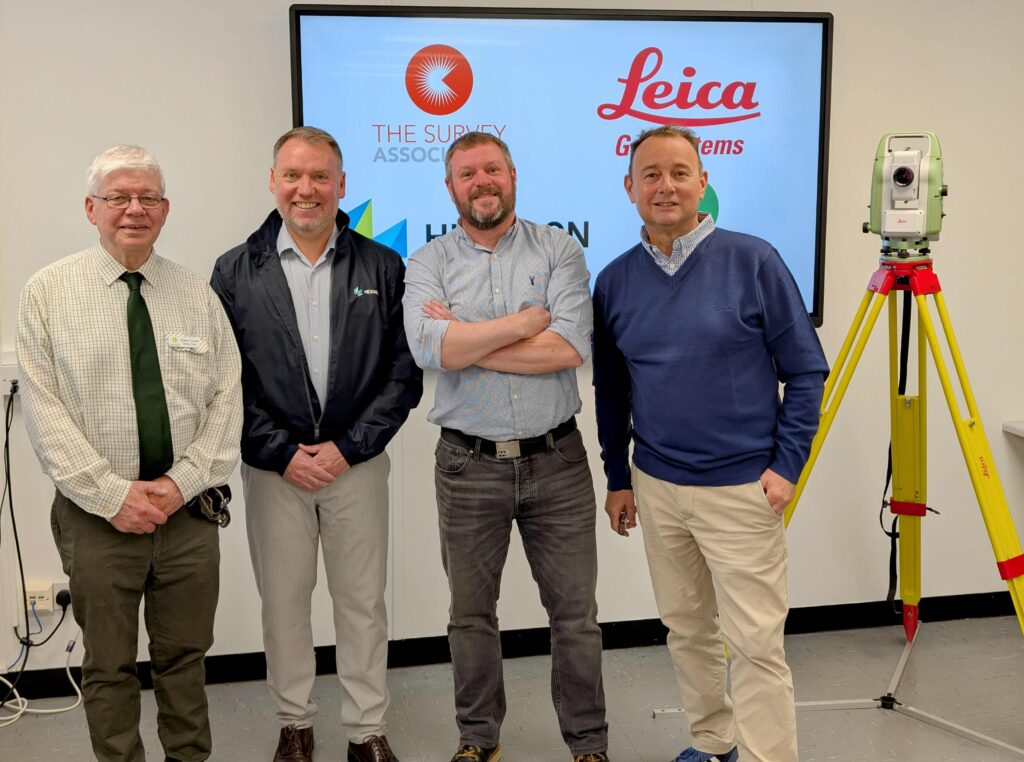
We were pleased to welcome representatives from each organisation to The Survey School for our official installation ceremony so they could see the technology and training room in use by some of our students. This cutting edge technology marks a significant step forward in enhancing our students’ learning experience—bringing lessons to life, boosting interactivity, and supporting our continued drive to improve both our hardware and teaching environment.
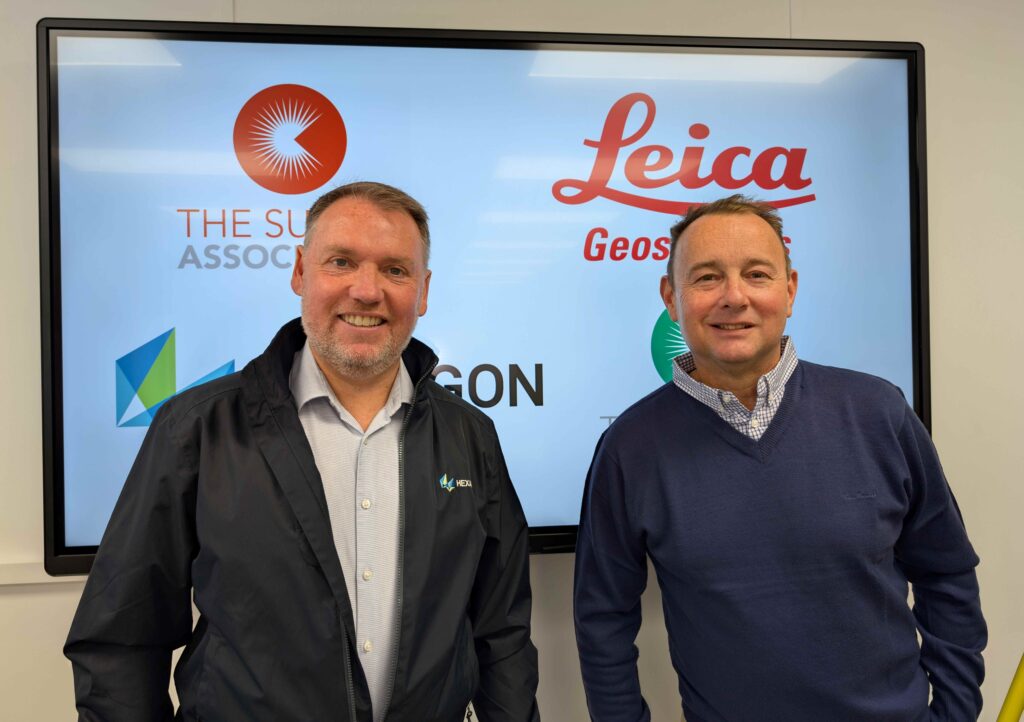
Alan Mansell, Survey School Manager, says,
“These exciting additions enhance the student learning experience, offering a more dynamic and engaging way to deliver course content. It also reflects our ongoing commitment to upgrading the school’s hardware and continually improving our teaching environment. Thank you to all these companies for their support and commitment to the future of surveying education.”
To get the land surveyors we need in the future, we require the best and experienced to train them. We are very lucky to have some fantastic tutors working for The Survey School. Full and part-time, some working as tutors whilst also running their own successful surveying businesses.
We asked our Senior Tutors, Andrew Crumpler and Adam Ball, to tell us about a “typical” day – if there is such a thing – of a Survey School tutor. These tutors shed light on their responsibilities, longer term projects and goals.
How does your day begin?
Andrew: I’m normally at The Survey School around 8am to gather the materials and equipment ready for the students who start at 9am.
Adam: I cycle into work which means the first thing I need after that is a strong black coffee!
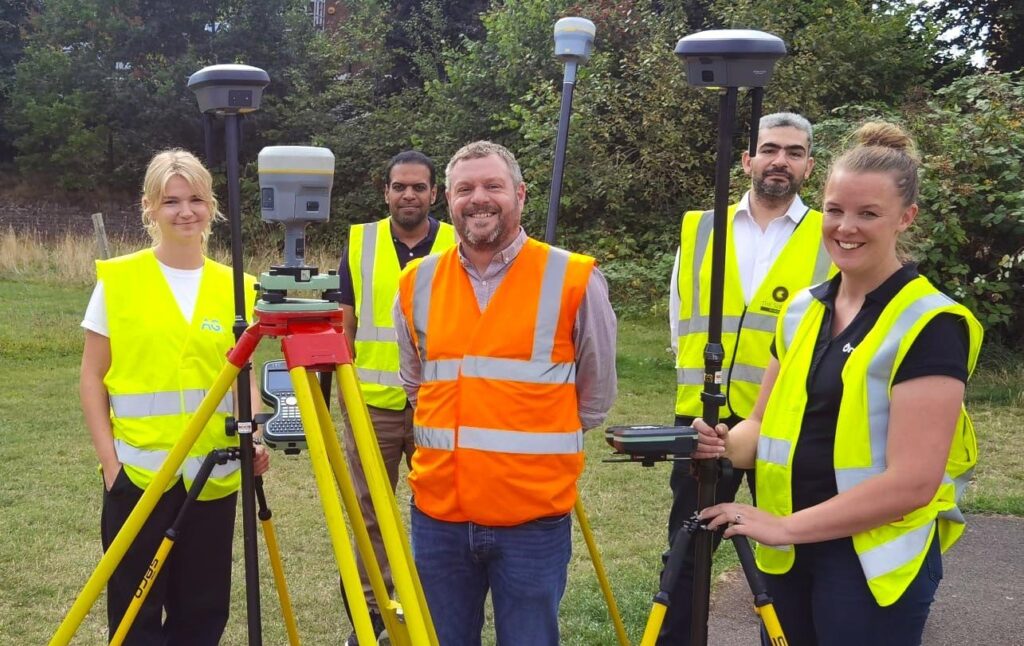
How is your day structured?
Andrew: I spend most of the day teaching – and standing up! Mornings are spent teaching the theory and doing worked examples. The afternoons find us mostly outside on practical exercises.
Adam: When not actively teaching, we’re marking student classwork, exams and assignments and writing reports, planning and preparing lessons and answering emails. Tutors also meet up to discuss plans for course content and share new ideas.
Andrew: Marking student work is a time-consuming process. It’s important to ensure that our marking is consistent and fair across all blocks of our 2-year TSA Course.
What led you to working as a tutor for The Survey School?
Adam: After 15 years working as a land surveyor I spent another 15 working in technical support and training for one of the major equipment manufacturers. I discovered the joy of sharing my experience and the satisfaction of helping to improve companies’ workflows and utilisation. This is what led me to taking the step into teaching: to continue to help to improve the surveying industry by showing passion and imparting knowledge to the students.
Andrew: I came into teaching after nearly 30 years working as a land surveyor. Like Adam, I have always enjoyed sharing my love of surveying with others and encouraging younger surveyors in the work place. Teaching was a natural progression.
What can your past experience bring to The Survey School?
Adam: Learning can be dull for students without being able to refer to real world examples. Past experience comes in very handy when students query the theory we’ve just covered or ask “Why do I need to know this?”, “When will I ever need it?” The answer is that surveyors need to be able to solve problems in very dynamic situations and broadening their skill-set can help them resolve an issue which they otherwise may have struggled with. It’s good to see that lightbulb ‘Eureka!’ moment where a trainee suddenly understands the theory behind why their company insists on a certain workflow, for example.
Andrew: I have seen a lot of changes in equipment during my time, but the fundamentals of surveying do not change. The new equipment brings a lot of advantages, especially in the speed and ease of acquiring data, as well as the sheer volume of data we now collect. However, without an understanding of the fundamentals, such as good geometry and the need for checking your work and redundant observations, it is easy for the novice surveyor to just write down the number on the screen without understanding if it is right or wrong. What experience brings, and what we teach the students, is to comprehend what the figures mean and to have an idea what the ballpark number should be, to avoid making silly mistakes. From experience we can teach where to look first if there is a problem and how to solve it.
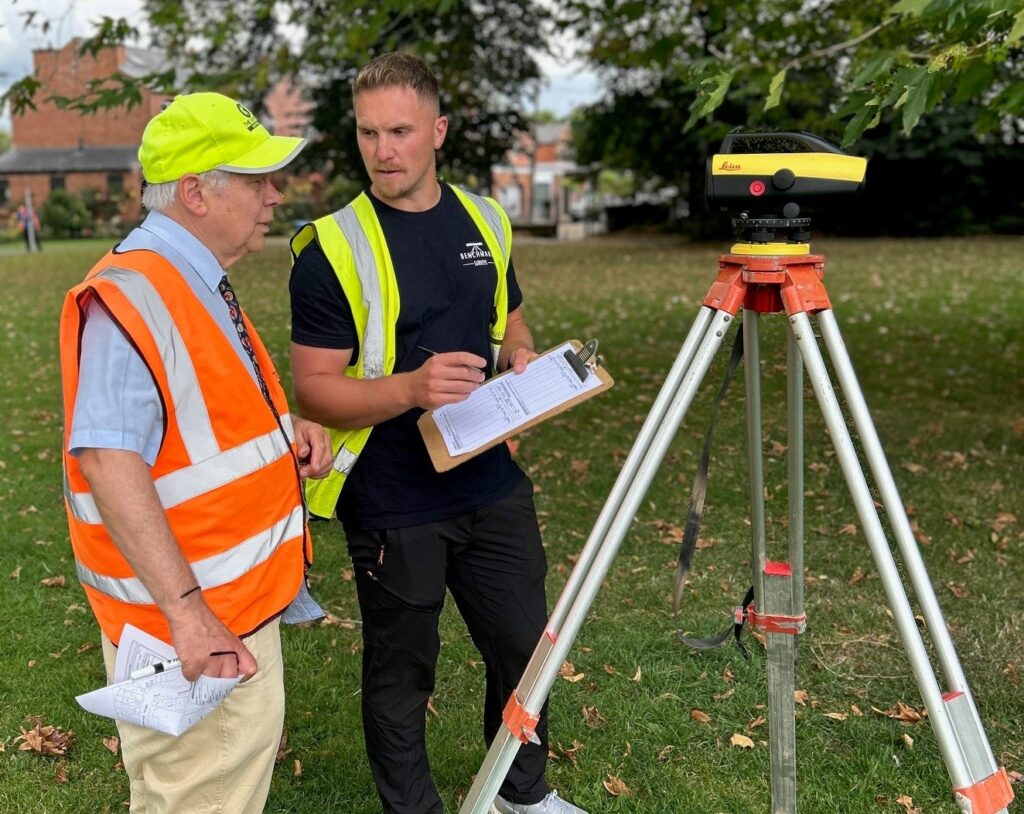
What do you think are the important skills and qualities of a good tutor, how would you describe your approach?
Andrew: Good tutoring prepares Survey School students for handling complex problems out in the field. Tutors support students as they acquire critical thinking skills and an understanding of what they are measuring and what the measurement might be used for. We encourage students to draw diagrams to illustrate the survey problem. Most surveyors, including myself, are better with pictures than with words. So if you can draw a good diagram you can do the maths.
All students work at different rates and come with different skills and experience. We encourage them to work effectively in a team, to learn from and to help their fellow students as well as learning and getting help from us. It is all part of the TSA Course.
Adam: Patience is a key quality for a tutor! All students learn and progress at different rates and it’s important to recognise this in order to be effective. I always try to make a connection between the theory and real-world applications. If the student can see the reason for the maths, they are far more likely to remember it. I’m also a big believer in making students recognise their own mistakes and correct it along the way. Students who learn to take their time will perform much better in real life work situations.
What do you like about tutoring?
Adam: I enjoy seeing the students’ confidence increasing over time, especially those who may have started the course with very little experience.
Andrew: It is encouraging the students, giving them the confidence in maths and seeing them understand the concepts you are explaining. The light bulb moment! I can see when they have put a lot of effort into their work and are really pleased with the results they have achieved. It is interesting to hear of the many projects students are working on and to learn about some of the innovative techniques they employ on site. We can then pass these onto the other students and help improve the level of skill in the industry.
What are some of the most challenging situations you have faced as tutors?
Andrew: Sometimes students do not have the full support of their companies, particularly when it comes to being given the time or equipment needed undertake the course assignments. We encourage students to let us know if they are having problems so we can contact their employer, or arrange to team them up with other members of the class.
Adam: As Andrew says, unfortunately some companies don’t fully realise the importance of giving the student the freedom to attempt an individual assignment, as this is often where they will first apply the skills and methodologies they have learnt whilst in the classroom.
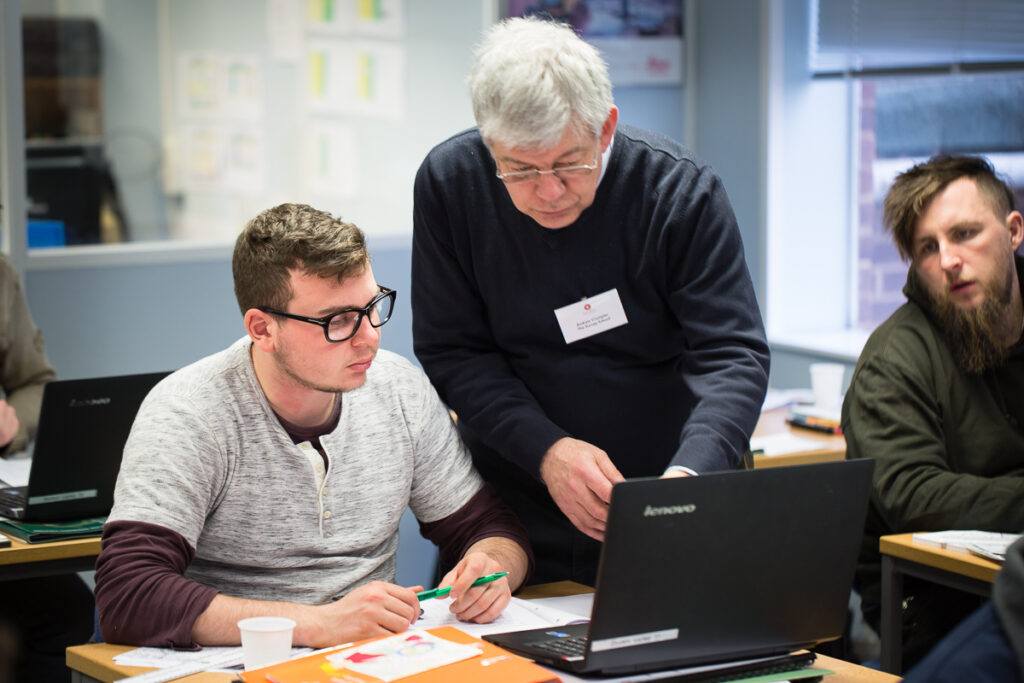
What does the future hold for the development of The Survey School Courses?
Adam: We will continue to add further aspects to the courses, as there are so many rapid advances in data capture techniques, such as mobile laser scanning and photogrammetry, which due to their ‘black box’ automated nature, many trainees are using without understanding how the principles of surveying should still be applied.
Andrew: I think that there is a great future as people are recognising the need to train up more skilled workers, particularly in construction. The Survey School has a wide variety of courses with which surveyors can improve their knowledge and skills, something that all employers can benefit from.
Proudest tutoring moment?
Andrew: The student Awards Day is always a special time, when we get to celebrate students’ graduation from the TSA Surveying Course. It is rewarding to see how proud the students are and to see them recognised for all the hard work they have put in, especially those students who have sponsored themselves.
Adam: Being quite new to the role, it’s still to come! It was great to attend my first student awards day as a tutor last year at the British Motor Museum. Seeing the students enjoying the appreciation of the land surveying community and realising that they are an important part of that community is something I think will always give me a sense of pride that I have played a small part in.
Andrew: We have had some outstanding students over the years. It is always nice to hear how they are progressing in their careers and to know that we have played a small part in encouraging them on their way. After all, the President of the TSA is a past Survey School student!
What do you enjoy doing when you’re not at The Survey School?
Adam: Outside work I enjoy spending time with my family, building a campervan and playing hockey at a steadily decreasing speed!
Andrew: I enjoy spending time with my family, walking on the Malvern Hills, doing a bit of photography or driving my old Land Rover.
To find out more about our tutors and the rest of our team, please visit https://www.surveyschool.org.uk/about-us/
To discovder more about TSA Surveying Course, please go to https://www.surveyschool.org.uk/the-course/
After studying at university, I decided that I would like to pursue a career that involved my love of the outdoors, properties and potentially even travelling. I just knew I didn’t want to sit in an office all day. I had never heard of land surveying until I saw a job advert and the description appealed to me with the added benefit of training. I had no idea what I was getting myself into and a career in land surveying has delivered much more than I ever expected!
Being in it together with my peers! We had a really good class and we all tackled the assignments alongside each other, so we felt part of a team. Hearing all about the various surveying services I hadn’t yet been exposed to, how other companies worked and the amazing projects the other surveyors had been part of.
The course was relevant to my day-to-day activities at work and thoroughly embedded my understanding and fundamental knowledge of the technical survey elements behind the technology I had been using.
I learned about the variety of skills a land surveyor has to have to enable them to be an all-round excellent surveyor. The most valuable lesson was understanding that the correct amount of checks is enough to ensure the accuracy required on a survey, and the skill is in getting the checks right to get the job done on time.
Leading a company is a very different role from being a full-time land surveyor. I have attended courses and read many business books to help me pivot from Surveyor to Managing Director.
Business strategy and helping others be the best version of themselves are my favourite parts of my role.
Varied, challenging, evolving.
At Spatial Dimensions, I encourage our business to get involved with students in the early years of education because I believe if they leave school not knowing the profession of surveying even exists, we’ve failed from the start. We have previously sponsored ‘Get Kids Into Survey’ and have distributed their posters into many primary schools around Kent.
Spatial Dimensions attends three to four local careers fairs per year, some of which have more than one school attending. Here, we demonstrate our surveying services, technology and prospects to teenagers.
I have spoken at various education events at comprehensive, grammar and private schools, from the angle of construction, surveying and business.
We offer work experience places each year and have had students from several schools. We also work with local colleges, providing on-going work placements and mentoring with careers advice.
In my role as TSA President, one of our key values is to ensure that ‘Every young person should know about land surveying as a career.’ The TSA works relentlessly to tackle the skills shortage of surveyors, getting as many people on board to help as possible and coming at it from various angles into the education system.
Believe in yourself, stay open minded and pursue something that has an element of your passions and realise that your interests can remain as hobbies. You don’t have to be the best at something, to have an amazing career and learning doesn’t end in the classroom.
Unfortunately our high profile projects often have Non Disclosure Agreements. We have worked on several incredible projects over the last few months that we aren’t allowed to publicly mention yet but I’m sure we can share some of these soon, so keep an eye on our website!
We are just finalising the large topographical survey and Revit models of the Cambridge Civic Quarter and Guildhall. Cambridge City Council have pledged fresh proposals for investment in a renewed Civic Quarter in central Cambridge and we are working with the Architect. It has been delightful to work on this project with all its fascinating history, the oldest building in the Guildhall dates back to 1224!
I think I would have to say the refurbishment of the Lancaster West Estate stands out in my memory. For those that don’t know, the Lancaster West Estate is the wider estate of the home of the Grenfell Tower. After the horrific tragedy, Spatial Dimensions were appointed to work with three Architect practices to aid the refurbishment of the Estate. To be appointed on such a high-profile project was a lot of pressure due to the sensitivities surrounding it and working for 3 sets of Architects, each with differing wants and needs from the survey, all at the same time. Throughout this project, we were trusted to survey in excess of 700 homes and all of the surrounding land which was around 27 acres. We often reminded ourselves that this project was going to positively change the lives of so many people that had been terribly affected. We were proud to do our part to help. As delivery deadlines loomed, the UK went into its first national lockdown! Definitely one to remember.
Spatial Dimensions are land, measured building and utility surveyors. We have three offices in London, Kent and Nottingham, and currently employ 23 people.
Our focus is primarily on the early stages of redesign and redevelopment, the early RIBA stages, and we work with our clients to create accurate survey drawings and 3D models. Our intention is to empower our clients with the data they require to redesign and redevelop.
We help our clients create amazing spaces, and have worked on plenty of phenomenal projects!
I think the next 10 years are going to see such major changes, that we are going to have to adapt quickly. I believe the advances of AI will have positive inputs on business, helping us streamline processes.
We’ve come a long way since our inception in 2012, something I could barely dream of back then with two small babies, hardly any sleep and a goal to just carry on earning a living in a job I enjoyed and somehow manage childcare.
I’d like to think the next twelve years will see us continue to grow and develop our offerings for our clients.
On a personal level, my proudest career moment was being elected President of The Survey Association. This very much felt like a completed journey, from being a student at The Survey School 20 years ago, which gave me the foundation and knowledge to become a good surveyor, to starting up my own company, then being elected as President, was an honour.
Spatial Dimensions has had many successes but being appointed to survey parts of Battersea Power Station in the early years of business, definitely made me proud. I grew up in South London so I knew this iconic building from my childhood. I remember standing in the middle of the huge turbine hall thinking, ‘I would have never predicted I would be doing a job like this, never mind running my own company that’s been commissioned to do it!’